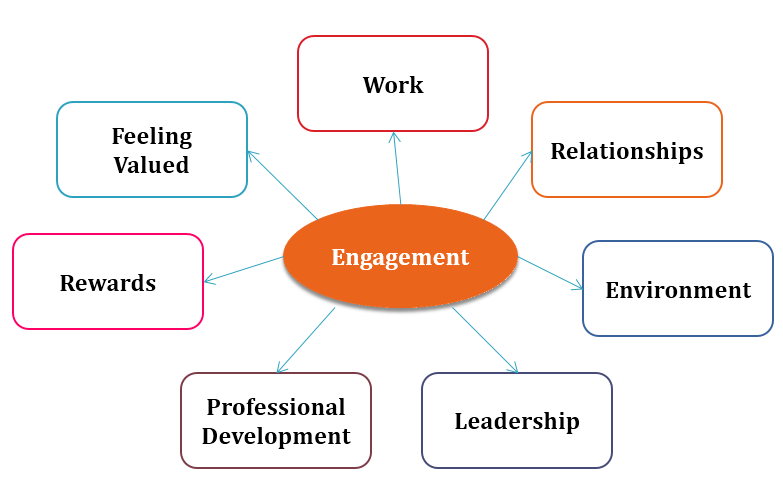September 19, 2016
By Catherine M. Mattice, MA, SPHR, SHRM-SCP
I’m a subject matter expert on the topic of workplace bullying, and that means being an expert in everything opposite of workplace bullying. I eradicate workplace bullying for my clients by helping them replace bullying with a positive workplace culture and engaged employees. When employees are engaged, when you have a positive workplace, then you do not have workplace bullying.
What is employee engagement?
A 2014 Gallup Poll defines employee engagement as being involved in, enthusiastic about and committed to work and the workplace. Gallup is talking about a profound connection here. How many of us can say that our employees feel an intense connection to our business, our products or services, and our mission? Unfortunately the Gallup Poll found that only 31% of employees do.
I like to say employee engagement is happening when an employee gives over their mind, body and soul each day at work. Mind refers to the decision that an employee makes every day, every minute, to be engaged. Body refers to the behavior or actions they take each day to further your business and the mission. Soul refers to emotions and feelings that one has towards work – if employees feel happy, for example, they will produce.
Seven Areas of Focus to Build Engagement
I’m the kind of person who looks for patterns, and in doing a whole lot of research on building engagement I’ve noticed that, no matter what list, article or book you read, ideas for building engagement always fall into one of 7 categories:
#1 Feeling Valued
Feeling valued is about being appreciated, understanding why your role is important, and feeling like you’re contributing to the organization.
For example, when I was the Director of HR for a financial services company, we hired file clerks who came in after high school each day to file.
In my naivety, when I trained them for their jobs, I told them, “Here’s the stack of papers, pick up a paper, find the number it corresponds with, and file it. Repeat.” I didn’t make any attempt to help them see why this was valuable, partly because I didn’t see the connection until something bad happened.
One clerk took large chunks of paperwork and stuffed it into random files in an effort to reduce the amount of filing she had to do. She did this several times, because she didn’t think it mattered.
Clients were getting angry that we’d lost their information and customer service really suffered. Turns out, file clerks are contributing to customer service, and of course good customer service means more customers. My file clerks didn’t see the value in their jobs because I’d failed to help them see it, but now I realize every single job in your company provides value. It’s your job to help each person see that.
Here are six things you can do in that regard:
- Look employees in the eye and say “thank you” once in a while.
- Start all staff meetings off by opening the floor for people to thank each other for things, however minor they might be.
- Cover a wall with paper, and let employees graffiti successes and thank you’s.
- At your next staff meeting, and/or on social media, announce something specific each employee has done in the last week that you appreciate.
- Ensure your onboarding program includes time to talk about why this new person is valuable.
- If an employee has an idea, actually listen to it. Discuss it, and if it will not work, talk about why.
#2 Work
To be engaged, employees must feel a connection to the work itself. They must also feel autonomous and flexible in their work schedule, be challenged by their work, and understand the link between their job tasks and the organization’s mission.
I once did a training for a company who had been set up by the city government to kill mosquitos. The town had a mosquito problem, and this agency was set up to solve it. On a break, I asked one employee standing near me to tell me more about the company. She said, “We kill mosquitos. That’s all we do.” Another employee overheard her and jumped in with, “Is that all you think we do here? We are saving the community from West Nile Virus!” He saw a connection with the mission, and I guarantee he was more engaged than the first employee.
Here are seven things you can do to help your employees see connection between their work and the mission, and to feel flexibility and challenge:
- On Fridays, require the lights be turned off by 5 pm (or require they turned off by 6 pm Monday through Friday).
- Reward employees with half-days off.
- Offer the opportunity to work from home sometimes.
- Talk about how each and every employee is connected to the mission, often.
- Make stretch goals part of your performance management system.
- Determine if your work/life balance programs really meet the needs of your employees.
- Be careful who you acknowledge as corporate heroes – if you say you have a culture of work/life balance, for example, don’t promote people who work 80 hours a week.
#3 Relationships
To be engaged, employees have to believe that there is strong teamwork and trust among the team. Employees must receive constructive feedback along with positive feedback, receive effective and useful communication from peers and managers, and believe in the group’s ability to make good decisions.
Here are seven action Items you can implement in order to help build relationships at work:
- Take company field trips during the work day as a way to let people socialize and get to know each other.
- Train everyone on how to give constructive feedback.
- Schedule time specifically to give positive feedback.
- Ensure your performance evaluation forms require accomplishments and positive skills be addressed.
- Serve as a role model by encouraging your staff to give you feedback too.
- Do a community service project as a group.
- Be transparent – I bet there’s a lot of things you don’t share with your employees that you probably should.
- Encourage your CEO to give “state of the union” speeches at least once a quarter, if not once a month.
#4 Environment
The environment also matters when it comes to engagement. The organizational culture has to be positive and promote thriving employees, and the worksite itself has to promote production and engagement. Of course, Google is a well-known example, with its work pods, steakhouse, and sleek interior design.
Some action items you can implement in this arena include:
- Redecorate! No, you don’t have to spend thousands of dollars on this. But if your walls are gray, perhaps a new coat of bright paint is in order. If your cubicle walls are gray, perhaps an employee competition for the most creative cubicle space is in your future.
- Hold open discussions about different topics, such as what a positive workplace means to employees, or on topics such as professionalism, civility, customer service, etc.
- Visit a local “best place to work” award winner to find out what tips you can borrow.
- Ask each employee to create a 20 second video about how they live your corporate values.
- If employees have no idea what you mean by living the values, then revamp your values into something employees believe in.
- Create a culture committee focused on driving your culture.
#5 Trust in Management and Leadership
It makes sense that in order for an employee to be engaged they have to believe in their management team and in their leaders. Employees have to trust that the leaders make good decisions and that leaders are sharing what they know. They have to feel supported by leaders, and they have to believe that managers are giving them everything they need to do their jobs well.
A friend of mine told me a story about bagels. Everyone received an email from the Director of HR that she was going to start bringing in bagels every Monday. The following Monday he didn’t eat breakfast because he thought there would be a bagel waiting for him at work. There wasn’t, and there never have been. Bagel Monday has never been mentioned again.
My friend said he was really annoyed – he now had to work Monday morning without any breakfast. The following Monday he got a little more annoyed, and every Monday for a few months the bagel debacle stuck with him. It wasn’t that there were no bagels, it’s that he’d lost trust in the Director of HR.
If bagels can damage engagement like that, think about how much it is damaged when something that matters happens (or doesn’t, as the case may be).
To build engagement in this area, consider:
- A training program for managers on how to “do” performance management, including setting clear expectations and coaching performance and behavior.
- Offer mentor/protégé programs to provide the opportunity for “underlings” to build relationships with leaders.
#6 Professional Development
Plain and simple, adults have to grow. So part of building employee engagement means offering opportunities to get training, to learn from each other, and to be innovative and try new things. Stagnant is fun for no one, and it won’t help your organization increase its market share.
Here are five cheap action Items you can implement to help employees get their fix:
- Create a lunch n’ learn schedule for each department. Ask each department to pick a topic and train the rest of the company on it. It could be customer service, a process that department uses, something related to your core values, or something totally random.
- Create a book club and meet once a month to discuss the book of the month.
- Encourage employees to work with non-profits to gain experience. I served as the President of my local Association for Talent Development, for example, and gained experience managing the largest budget I’ve ever managed.
- Charge each department with a goal that is a little outrageous and reward them if they achieve it.
- Encourage employees to take webinars – there are free ones ALL OVER the internet.
#7 Rewards and Recognition
Finally, of course rewards are part of building employee engagement. Rewards could be anything from a thank you to an increase in compensation or a bonus.
To ensure you are properly rewarding employees:
- Ask your employees how they want to be rewarded.
- Write a handwritten note. I have little cards that say, “You’re doing a great job” and I just place them on my employees’ desk or hand it to them in the hallway. No big production, but I can see it makes them smile.
- Use employee work product as an example. If someone does something great, make it a teachable moment at the next staff meeting. Recognition and training all in one.
- Make sure the connection between performance and the resulting rewards are crystal clear.
- Send an email to the whole company about an employee’s success, and do it often.
- Take out an ad in the employee’s professional association newsletter or in your local newsletter, and share the employee’s success publicly.


Categories
Tags
PermalinkComments (1)
Leave a Comment
You must be logged in to post a comment.



Super share. Quite practical & doable.